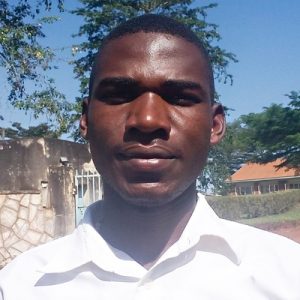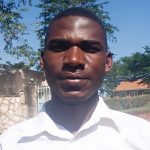"I have suffered traveling long distances to draw water from the nearest protected springs because our community borehole well has broken down," said Jessica Pirango, a 36-year-old woman who lives in Ejinga Taosati Community.
The broken-down well is located near a trading center and it usually serves more than 260 people within the village. Due to its current status, the community has abandoned it and opted for other water sources at the far ends of the village which are always overcrowded and are very dangerous for the children.
People like Jessica must wait in long lines to get water after walking for more than 30 minutes to reach the spring. The time she and other community members spend fetching water could be used to do more productive things at home and on their farms. Most people here make a living as subsistence farmers. They grow maize, millet, and beans that they try and sell to make a little money in the local market.
Restoring this water point would reduce the time and distance currently required of these community members to access water.
"I wish our borehole was fixed. I don't like helping my mother fetching water from the far protected spring. Going to the valley can be scary, especially when it's dark in the evening," shared George, a 12-year-old boy we met.
Sanitation conditions around the water point are fair, but the water point lacks a fence and there are nearby bushes. Creating awareness and a community action plan is urgent and critical to improving the water point. Despite the good reported levels of sanitation in the village, it would be appropriate to promote not only use but proper use of these facilities to ensure the health of the community.
Here’s what we’re going to do about it:
Rehabilitated Well
We are going to restore water to the broken-down borehole. Since this water point is located at the center of the village and easily accessible by the majority of people, unlike the springs which are located at the far ends of the village, when this borehole is restored to its original status it will provide the community with easy access to clean and safe water. We will remove the old pump, clear out the well, reinstall a new stainless steel pump, and build a new well pad to protect the water.
Training
Training’s main objectives are the use of latrines and observing proper hygiene practices since these goals are inherently connected to the provision of clean water. Open defecation, water storage in unclean containers, and the absence of handwashing are all possible contaminants of a household water supply. Each participating village must achieve Open Defecation Free status (defined by 1 latrine per household) before the pump installation for a shallow hand-dug well.
This social program includes the assignment of 1 Community Development Officer (CDO) to each village. The CDO encourages each household to build an ideal homestead that includes a latrine, handwashing facility, a separate structure for animals, rubbish pit, and drying rack for dishes.
We also implement the Community-Led Total Sanitation (CLTS) approach with each of our village partners. This aims to improve the sanitation and hygiene practices and behaviors of a village. During these sessions, village leaders naturally emerge and push the community to realize that the current practices of individual households – particularly the practice of open defecation – are not only unhealthy but affect the entire village. CLTS facilitates a process in which community members realize the negative consequences of their current water, sanitation, and hygiene behaviors and are inspired to take action. Group interactions are frequent motivators for individual households to build latrines, use the latrines, and demand that other households do the same.
Improved Sanitation
The aim is that all households own an improved latrine. Many households do not use a latrine but use the bush. Due to open defecation, feces are spread all over the village. This leads to waterborne diseases and contamination of groundwater and surface water. Our aim is that the community is able to live a healthy life free of preventable diseases. We endeavor that at the end of our presence in the community, people will have both access to sustainable, clean water and access to sanitation. We have now organized families to form digging groups for latrine construction, and empowered them with tools they will need.

 Borehole Well and Hand Pump
Borehole Well and Hand Pump




























